Battaglia di dieci uomini nudi
Antonio del Pollaiuolo (Italian,1431–1498) was a renowned Florentine painter, sculptor, draftsman, and goldsmith who was particularly admired for his dynamic and expressive portrayal of the human figure. He carried out a wide range of projects including a series of Hercules paintings (now lost) for the powerful Medici family in Florence, designs for embroidered vestments, monumental tombs for Popes Sixtus IV and Innocent VIII in St.Peter’s Basilica in Rome, small bronze sculptures, and reliefs.
Today, however,a relatively small number of his works survive,and he is perhaps best known for his magnificent engraving, Battle of the Nudes. The Battle of the Nudes is reproduced in nearly all major art history and Renaissance art survey texts. The print is one of the earliest works of Renaissance art to convincingly portray the figure in motion and to suggest how muscles behave under the stress and strain of violent or vigorous activity.
Monumental in size as well as concept, Battle of the Nudes is among the largest Florentine engravings of the 15th century and the first print to bear the artist's full name. Battle of the Nudes belongs to the very inception of the Renaissance portrayal of the blatantly nude adult male, a motif inspired by classical art sources. The study of antique representations of the anatomy as well as mastering a repertory of harmonious and natural movements goes back to the early decades of the 15th century. Pollaiuolo showed exceptional skill in his imaginative adaptations of poses derived from antique sarcophagi and other ancient sculpture.
The sixteenth-century artist and biographer Giorgio Vasari described the print,and Pollaiuolo ’s skill:
"...he engraved on copper a battle of nude figures all girt round with a chain;and after this one he made other engravings,with much better workmanship than had been shown by the other masters who had lived before him."
The engraving was widely circulated and is often credited with the dissemination of Italian Renaissance ideals - particularly the modeling of the human form. German artists such as Albrecht Durer (1471-1528) and Jorg Breu (c. 1480-1573) are known to have used the engraving as a model for their own compositions. Its impact on other artists work is evident in their references to the dynamic poses, anatomical explicitness and expressive character of Pollaiuolo's figures.
A considerable part of Pollaiuolo's intention was to demonstrate his capacities as a master draftsman of the figure, while exploring the potential of the new printmaking medium - a medium well suited to his skills as a metalworker and goldsmith.
LE OPERE
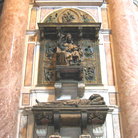 Monumento Funebre per Innocenzo VIII
1497 | Bronzo
Monumento Funebre per Innocenzo VIII
1497 | Bronzo
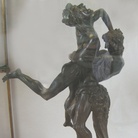 Ercole che uccide Anteo
Bronzo | 45 x 0 cm.
Ercole che uccide Anteo
Bronzo | 45 x 0 cm.
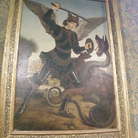 San Michele Arcangelo
Olio su tela
San Michele Arcangelo
Olio su tela
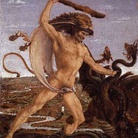 Ercole e l'Idra
1470 | Tempera grassa su tavola | 12 x 17 cm.
Ercole e l'Idra
1470 | Tempera grassa su tavola | 12 x 17 cm.
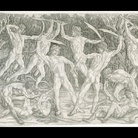 Battaglia di dieci uomini nudi
1460 | Incisione | 60 x 42 cm.
Battaglia di dieci uomini nudi
1460 | Incisione | 60 x 42 cm.
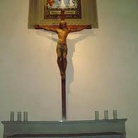 Crocifisso
1470 | Sughero
Crocifisso
1470 | Sughero
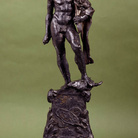 Hercules
1450 | Bronzo | 29 x 44 cm.
Hercules
1450 | Bronzo | 29 x 44 cm.


